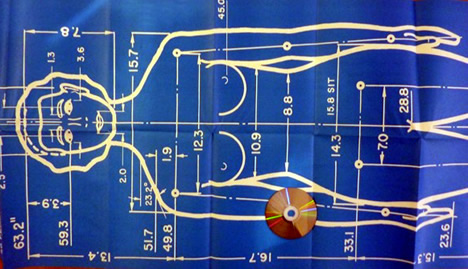The Measure of Man: Human Factors in Design is the most incredible book. Written by celebrated industrial designer Henry Dreyfuss, the book was first published in 1959, and is now available as the politically correct The Measure of Man and Woman. The tri-fold pocketed second edition you see above (with contents below) was published in 1967.

The book contains 32 black and white anthropometric charts on heavy card, which describe every detail of how the human body functions – from movement to growth – covering both sexes and different body types.

Two life-size human figure charts are included (one male, one female, white on blue); I’ve shown one above with a CD for scale. These would look great on the wall of any modern design or usability agency.


My favourite part is also the least exciting aspect of the package (in terms of physical format): the tables of data in the 20 page book. That sounds like a fairly thin book, but it’s packed with incredible data and insight into human-focused design. These don’t just cover typical ‘ergonomic’ topics, but also more modern subjects that include the accuracy and function of displays.
It’s not the kind of book you can sit down and read on the train, but it’s a breath of fresh air to read something so well researched, and full of quality data, with none of the filler so-typical of modern books.

I loved the old version of the book. I’ve discover him in Dan Saffer’s book: Designing for Interaction, and it’s really interesting to find this. Indeed, I would love to have this chart on my wall!